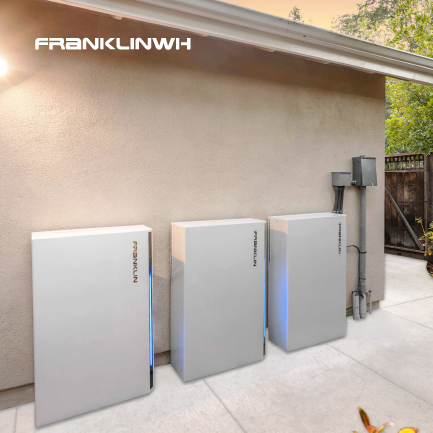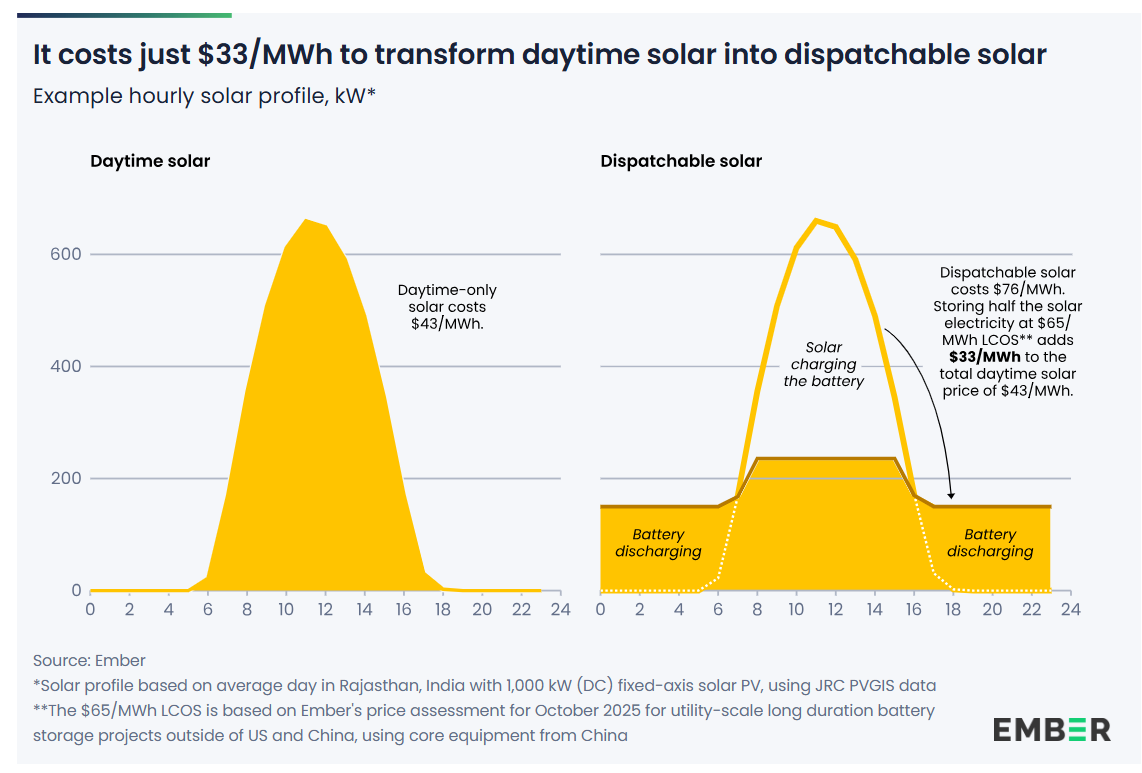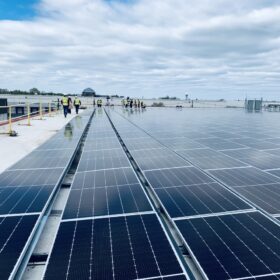Addressing the threat posed by climate change will mean using massive amounts of clean energy resources like solar to both decarbonize and electrify the economy. While projects hundreds of megawatts in capacity and breakthrough battery tech steal a lot of the headlines, small-scale, distributed energy resources (DER) will be one of the pillars holding up the energy transition.
Distributed generation and storage can help to keep communities powered during storms and outages, keep electricity costs low, and ensure the benefits of renewables reach all the members of a community. Community microgrids are increasingly being viewed as a necessity for future energy resiliency.
Founded in 2019, Franklin Whole Home (FranklinWH) has been making waves to start 2022, with the company announcing the launch of its first residential storage system. The FranklinWH system integrates its lithium iron phosphate “aPower” battery with adaptive learning, which is part of the included aGate smart control system.

The 13.6KWh battery is compatible with any PV inverter technology, the company reports, and it can connect with existing solar systems while scaling up to 15 units for a total of 204KWh of capacity. In the event of a power failure, its black start feature creates a micro-grid for the home.
One of the main points the company focused on in development of the system was ensuring ease of operating for the customer; breaking down the barrier many customers perceive to exist between them, and understanding and getting the most out of their home storage system.
At Intersolar North America 2022, pv magazine was able to sit down with FranklinWH Chief Sales Officer Cheung “Gary” Lam to discuss the development process for his company’s first commercialized product, and FranklinWH’s vision for the future of distributed storage in the US.
As Lam sees it, utilities currently value distributed storage only in aggregate use cases, like for demand response or peak demand shaving programs. He sees opportunity to shift this perspective, presenting the individual value of storage assets to both the consumer and the utilities at large.
“What we are trying to do is make decentralized storage capable of working in a truly decentralized way, like in its own way.” Lam told pv magazine. “If [the system] is disconnected from the grid, we still have the safety and functionality to guarantee that someone’s home is delivering power not only safely, but in a way that still allows them to live comfortably.”
Value for the customer
On the customer side, the FranklinWH pitch, at first, is similar to many other residential storage solutions: the system provides backup power in the case of grid failure or weather-related outages, while also providing significant bill savings in typical, day-to-day operations. Where FranklinWH has developed the system to excel is in its ease of use and management.
Within the system’s dedicated aGate smart control system, customers can configure their battery to automatically maximize their bill savings, by using electricity from the grid when it is cheapest and using stored or self-generated electricity when prices are higher. The system also includes weather forecasting, and can focus on charging the battery from a PV system before a storm rolls in.
In outages, aGate’s adaptive-learning technology allows it to manage complex load scenarios, and the user can integrate three additional large loads such as HVAC, pool heating, or electric vehicle charging.
According to Lam, the biggest impediment holding back the vast potential of distributed storage, is how difficult it can be to retrofit storage onto an existing PV system, a process made harder the older that the system in question is.
This impediment was the second major focus when developing FranklinWH’s storage system.
“Currently, it’s very complicated, most of the solutions out there are for DC coupling, and they have to tie [the battery] into your solar system.” Lam explained. “Compatibility then becomes a big issue. If you installed a system five years ago, you might have to rip up your entire system and re-install a new solar system just to be compatible with the battery you chose.”
By using an AC architecture, FranklinWH was able to develop a standard 240 volt split-phase system that he attests any electrician could add to a home energy supply with no previous solar or storage installation experience.
Getting utilities on board
To anyone familiar with DERs the issue Lam sees as the biggest impediment to widespread DER adoption from a utility perspective is a tale as old as time: our grids aren’t capable of handling high-density DER penetration.
Lam shares that, as well all know, the grids we still rely on, especially on the coasts, were developed over 100 years ago, designed with much lower power demands in mind. With the advent of HVAC systems and air conditioning becoming standard in almost every home, and the increasing proliferation of electric vehicles and their charging hardware, the grid is being stressed to the point of fault across the country.
As would be expected of anybody in the DER space, Lam sees self-generation and self-consumption as the solution. If you take assets off the grid, or have them interact with each other independent of the grid, you relieve significant stress.
And while utilities have, in general, been opposed to the widespread proliferation of DERs, due to the adverse effect those systems have on the utility’s traditional business model, widespread transmission and distribution grid upgrades are far more costly than the revenue lost by self-generation. Moreover, self-supply and stress reduction are not the only features of DER, and the full suite of grid-strengthening attributes the resources present has never been given a hard value.
“Self-consumption will be the most effective way to go against this kind of challenge,” said Lam. Any energy you store is generated, stored, and consumed locally. You don’t occupy any transmission capacity, and the transmission utility is more like an ultimate backup for you. If anything fails, you still have your grid with you. And that’s like the ultimate safety.”
This content is protected by copyright and may not be reused. If you want to cooperate with us and would like to reuse some of our content, please contact: editors@pv-magazine.com.









This is a great piece on the value of integrated energy storage for homeowners. I really appreciate the idea of adding more large loads for a more complete user experience.
But why should the homeowner come up with $20,000.00 to $100,000.00 for batteries that will only last 10 to 12 years? A homeowner would be better off with a Generator and a Transfer switch for backup power. For grid power balancing, why should the homeowner be responsible for the installation and upkeep costs? Utilities should be installing these in each neighborhood and storing the excess energy in them for grid balancing and backup power during power failures. The cost of these battery installation could be placed on all the utility bills as a monthly service fee rather than having just the solar homes pay for it just like the cost of Peaker plants are. When the cost of home batteries comes down to $100.00 per kilo watt hour stored, similar to lead acid battery backup or off grid systems, then it could be worth it. Right now, they cost $500.00 per kilo watt hour of stored electricity and that is too costly.
I’ve got to agree with Edward’s observations regarding current cost/ value considerations. I think DER micro grids will become the norm in typical suburban small to mid size cities when neighborhood shopping centers & business parks are incentivized to install rooftop solar & parking lot solar canopies and about 25% of new vehicles are EV, including most commercial fleet & public transit vehicles. With V2G charging at both home & work, all those connected mobile batteries will create a tremendous storage flywheel to stabilize neighborhood micro grids. Typical solar homeowners who own an EV would only need a very small stationary battery. Primary stationary storage/ backup battery banks would be located at the neighborhood commercial sites, where there’s lots of critical refrigeration & HVAC load.